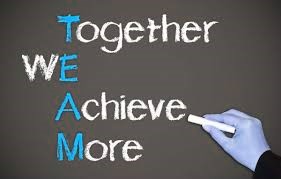Now you have a broad idea of what it means to be a good leader, it’s time to break this down and to examine each of these points in more detail. But the most important point we can discuss is inspiration. If you can inspire your team to work, then you can get the very best out of them no matter what else. If they believe in your vision, they will be
absolutely loyal and absolutely committed to what you’re doing. They will work harder and longer hours and they will drive your business, department or startup forward faster than anyone else.
Notice the word ‘vision’ here. That’s very important and we’ll come to why in a moment. What’s more, is that if you have a vision for your team, you’ll help to inspire others. That means your customers and your potential business partners. More people will want to work with you. More people will want to buy from you. And more people will want to be loyal to your brand and to think of themselves as a ‘part’ of what you do.
It goes deeper too. That’s because having a vision can also help you to make the right decisions for your organization. We talked briefly about the importance of not just keeping your team afloat but of growing and avoiding catastrophe? That all comes from having the right vision. Your vision is what gives you your goal. And if you get it right, it should also be what gives you your drive to succeed and makes that passion contagious. Many of the points we talk about later in this article will stem from that vision.
Introducing: The Golden Circle
Perhaps the best way to illustrate what is meant by this, is to look at a concept in business known as the ‘golden circle’. What is the golden circle? Well, if you believe the highly popular TED talk by Simon Sinek (who first proposed the concept), the golden circle is the difference between innovating companies that grow and thrive and those companies that fail.
Why is it that Apple is constantly creating more exciting products he asks? (This was a while ago, bear in mind).
Why is it that the Wright Brothers’ succeeded where others failed, others who had more resources and more means?
The answer is the golden circle. The golden circle is made of three ‘rings’ which can be seen like layers. On the outermost ring, you have the word ‘What’. Inside that, you have the word ‘How’. And on the innermost ring, is the word ‘Why’.
So as a leader, you need to think about these three things:
-
- What?
-
- How?
-
- Why?
For the sake of simplicity, we will start by focusing on this question from a business perspective. That means we can change these questions into:
-
- What do you do?
-
- How do you do it?
-
- Why do you do it?
And the key aspect to all this is that last part – the why. The most important question you can possibly ask yourself as a business is why you do what you do. And what might surprise you is that a lot of people can’t answer this
question. What they tell you is that they are in their business to make money. Other than that, what ‘why’ is there?
This is where your company ‘mission statement’ comes in and this is something that all the most successful businesses in the world have in common – great mission statements.
It is the company with the mission statement that actually believes in something, that has a strong brand and that other people can get behind.
Some examples:
Ikea
At IKEA, our vision is to create a better everyday life for the many people. Our business idea supports this vision by offering a wide range of well designed functional home furnishing products at prices so low that as many people as possible will be able to afford them.
Amazon
It is our goal to be Earth’s most customer-centric company, where customers can find and discover anything they might want to buy online.
Coca-Cola
To refresh the world in mind, body and spirit. To inspire moments of optimism and happiness through our brands and actions. To create value and make a difference.
Facebook’s mission is to give people the power to share make the world a more open and connected.
Google’s mission is to organize the world’s information and make it universally accessible and useful.
Intel
Delight our customers, employees and shareholders by relentlessly delivering the platform and technology advancements that become essential to the way we work and live.
McDonald’s
McDonald’s brand mission is to be our customers’ favorite place and way to eat and drink.
Microsoft
Our mission is to enable people and businesses throughout the world to realize their full potential.
This is important because it is what makes the brand something that the audience, the employees and the leaders themselves can believe in – and it is what sets the long-term course for the journey. And as Simon Sinek puts it: people don’t buy what you do, people buy why you do it.
The objective is not to sell to people who need what you make, the objective is to sell to people who believe in what you believe. Those are the people who will be loyal to your brand. And the same goes for employees. Employees who believe in your mission statement will stay up late at night working because they believe in what they do – they’re excited by it and they want to see it happen.
Heck, people on Kickstarter will even pay to see your mission statement become a reality even when there’s nothing in it for them. Oculus’ mission statement is to: deliver incredible, affordable and ubiquitous consumer virtual reality to the world. This is a mission that people believed in so strongly, that they essentially funded the organization and allowed it to become a real-life company.
A good business starts with that vision and then builds outward from there – everything from the branding, to the marketing, to the products themselves should align with that eventual end goal. And when you’re excited about your goals, it will be infectious. When you’re excited about where your business is going, it will come across
in the way you gesticulate, the way you talk and the way you lead. And this is what will make people follow you to the ends of the Earth.
Discover more from Personal Blog of Richard Tong
Subscribe to get the latest posts sent to your email.





Muchos Gracias for your post.Much thanks again.
Hey, thanks for the blog post.Much thanks again. Great.